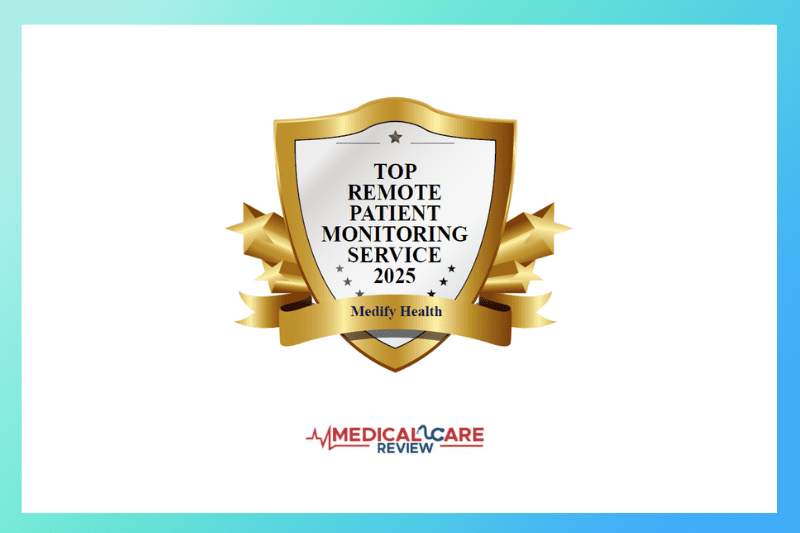
Many Accountable Care Organizations (ACOs) are diligently working to contain costs. Since they are focused on Value-Based Care (VBC) savings, adding new Fee-for-Service (FFS) services such as Chronic Care Management or Remote Patient Monitoring can seem counterintuitive.
However, based on over a decade of focused experience improving outcomes in high-risk populations, I want to offer a clear, data-driven perspective.
Applying Connected Health services like CCM or RPM to simply a fraction of an ACO’s patient panel can unlock substantial financial and clinical value.
Why Should ACOs Reconsider Chronic Care Management?
Virtual care services like CCM and RPM are becoming more effective, and more popular, as technology advances. Increasingly, patients are adopting medical wearables themselves.
However, ACO leaders may remain skeptical and ask: will the latest glucose monitor turn into the step counter from years past, with fading popularity and questionable value from the data?
The answer is probably yes: collected data will not drive change in itself. Wearables work well when clinical experts monitor trends and coach patients to meaningful health outcomes.
ACO leaders can see the value of virtual health monitoring coaching services like RPM and CCM simply by comparing recent success stats to its most high-potential population: Medicare-age Multiple-Visit Patients (MVPs), also known as Frequent Flyers.
Why Should an ACO Focus on MVPs?
Medicare-age MVPs, by far the most cost-driving beneficiaries, represent an outsized opportunity for improvement.
According to the Medicare Payment Advisory Commission (MedPAC), the top 20% of Medicare-age patients are responsible for more than half of total expenditures. The top 5% of Medicare beneficiaries alone account for approximately 30% of all Medicare spending. (MedPAC, 2023).
While an average Medicare patient may visit an Emergency Department (ED) once a year, a Medicare MVP might visit an ED once a month.
What Drives MVP Total Cost of Care?
Patients in the top 10% to 20% of total Medicare expenditures frequently live with multiple chronic conditions such as: heart failure, diabetes, chronic obstructive pulmonary disease (COPD), and chronic kidney disease. Even if patients feel better during a medical visit, they return home to a negative cycle in which they feel pain or weakness which drives them to unhealthy behaviors or mental health issues which, in turn, exacerbate their health condition.
Key cost drivers in this patient segment include:
1. Frequent Hospital Admissions and Readmissions
Inpatient stays represent some of the most expensive services in Medicare, with the average admission costing between $14,000 and $17,000 per episode. Readmissions within 30 days add significantly to this financial burden, with many exceeding $15,000 per occurrence.
2. Emergency Department (ED) Utilization
High-risk Medicare patients often rely on the ED for acute exacerbations of chronic conditions or unmanaged health issues. Each ED visit typically costs between $1,500 and $2,000, and repeated visits can quickly escalate annual spending.
3. Skilled Nursing Facility (SNF) and Post-Acute Care
Following hospitalization, many high-cost patients require SNF care, home health services, or rehabilitation. These services can range from $6,000 to $12,000 per episode, depending on the complexity and duration of care required.
4. Specialist Office Visits and Testing
High-risk patients often require extensive specialist visits, diagnostic testing, and advanced treatments such as surgeries or invasive procedures.
Fragmented and uncoordinated care leads to unnecessary spending through duplicated testing, redundant imaging, inappropriate procedures, and preventable health crises. Patients who see multiple providers without effective communication or centralized care plans frequently experience gaps in care that lead to avoidable costs and suboptimal outcomes.
5. Pharmaceuticals
In 2022, the average annual Medicare Part D drug spending per beneficiary was approximately $2,400 (including both Medicare and patient-paid amounts) according to the Medicare Trustees Report and Kaiser Family Foundation. Estimates from CMS and MedPAC reports suggest that pharmaceutical spending in high-cost cohorts ranges from $7,500 to $12,000 annually per patient.
Patients who require specialty drugs—common in high-cost populations—can have annual drug costs exceeding $20,000 to $50,000, though these extreme cases typically affect a smaller subset of MVPs.
What is the Best Tool to Reduce Medicare-Age MVP Total Cost of Care?
Medify’s Connected Health platform is specifically designed to address Medicare-age clinical and cost challenges through RPM, CCM, and proactive virtual health coaching.
Comparison of High-Cost Challenges and Medify Solutions
| Primary Challenge | Medify Solution | CCM/RPM Outcomes |
|---|---|---|
| Multiple chronic conditions | Monthly chronic care management, medication reconciliation, health coaching | 25% reduction in hospitalizations |
| Uncontrolled clinical metrics (BP, A1c, weight) | Remote monitoring devices, personalized coaching, timely clinical interventions | 53% improvement in hypertension control; 32% reduction in high HbA1c levels |
| Frequent ED visits and hospitalizations | 24/7 monitoring, automated alerts, preventive outreach by care team | 25% reduction in all-cause hospitalizations and 20% reduction in cardiac-related deaths |
| SDOH barriers and social isolation | Monthly coaching, SDOH screening, proactive community resource referrals | 95% patient retention; high engagement in underserved populations |
| Fragmented care coordination | Integrated EHR documentation, care gap closure, systematic preventive care outreach | Higher preventive screening rates and improved quality scores |
Case Example: A Conservative ACO Model with 5,000 Medicare Patients
Scenario Details:
-
Targeted Cohort of High-Risk Patients: Top 20% of high-cost patients (1,000 patients)
-
Average Annual Total Cost of Care per High-Risk Patient: $30,000
-
Medify Service Deployment: 50% enrollment of eligible patients into turnkey remote monitoring and health coaching
Projected Financial Impact:
-
Estimated Annual Cost Reduction per Patient (15% of $30,000): $4,500
-
Total Annual Cost Reduction (500 Patients): $2,250,000
- Total Annual MSSP Financial Benefit (Assuming 50% Split): $1,125,000
This financial impact does not include other benefits, including: FFS service revenue from virtual coaching encounters or improved patient satisfaction scores, which can significantly impact MSSP reimbursement.
Is RPM or CCM Worth the Cost for Medicare Patients?
In a nutshell, a turnkey service like Medify Health that combines active Remote Patient Monitoring and Chronic Care Management is exactly suited to address the biggest determinants in extremely high usage of medical services. Simply by addressing the top two deciles of Medicare patients by medical service need, an ACO could mitigate costly medical crises which leads to benefits for both patients and providers.
How Much Does a Combined RPM/CCM Service Cost Today?
Medify’s is a strong example of a turnkey RPM/CCM service that generates FFS revenue for the medical practice, covering all costs and providing high potential profit. Since Medify focuses on being extremely easy to implement, Medify’s full-service clinical and administrative team additionally tends to reduce practice staff workload as an added benefit.
As a result, a proactive healthcare coaching and monitoring service like Medify Health can provide significant savings and revenue for VBC-focused organizations during these turbulent times.



